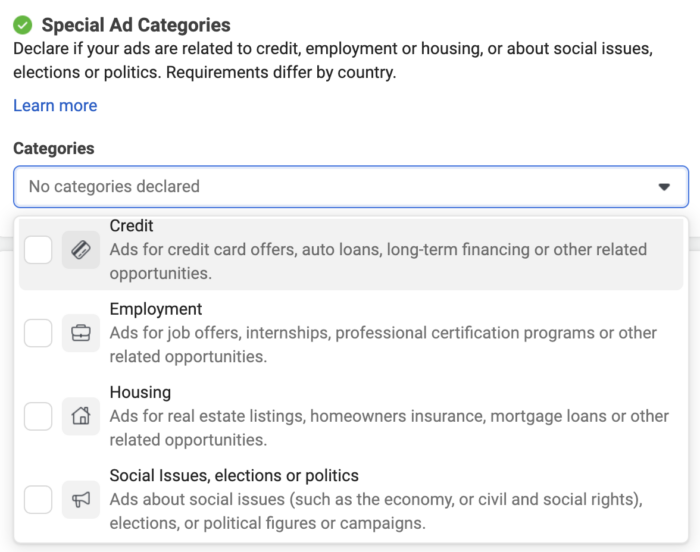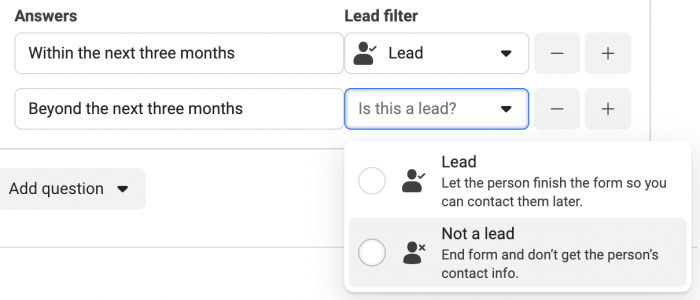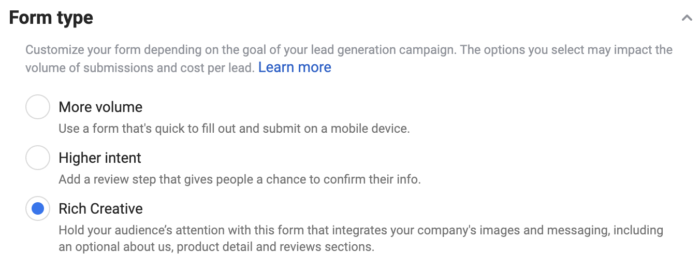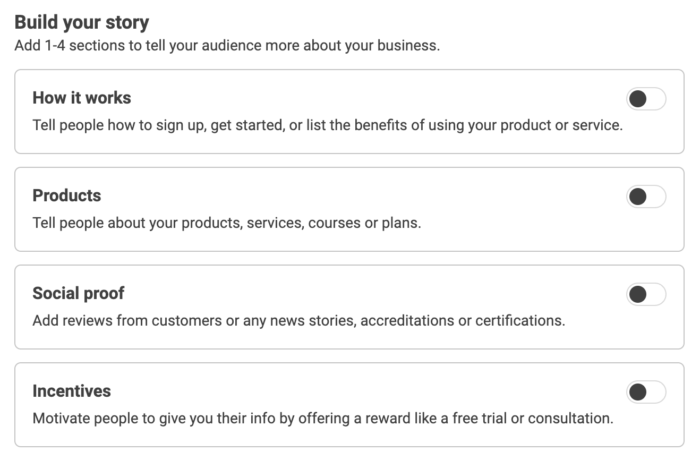Meta advertisers who promote special ad categories have a challenge. Among the restrictions they face, the biggest complaint is related to the lack of targeting control. But you still can get results using special ad categories.
When creating a campaign, this is one of the first things you’ll need to declare if your promotion falls within one of these categories:
- Credit
- Employment
- Housing
- Social Issues, Elections, or Politics

Once you do, your options within the ad set and ad are adjusted to prevent you from violating rules.
In this post, we’ll discuss the challenges advertisers face when promoting special ad categories and where you should focus to get good results.
The Challenge
One reason for special ad categories is that Meta wants to prevent you from breaking rules that could potentially get them in trouble (and you, of course). We saw this with Cambridge Analytica and the special ad category related to Social Issues, Elections, or Politics. But we also see this regarding discrimination claims related to the special ad categories of Credit, Employment, and Housing.
This post is focused largely on those three since the selection of any of them as a special ad category will significantly impact your targeting control.
Following are examples of how your targeting inputs are restricted:
1. Age: Restricted to 18 to 65+.
2. Gender: Fixed to all genders.
3. Detailed Targeting: Some detailed targeting options will be unavailable. No ability to exclude any detailed targeting.
4. Location: Must include all areas within a 15-mile radius of any location. No ability to target by postal code or zip code.
5. Custom Audiences: You must be sure that your audiences do not discriminate.
6. Lookalike Audiences: Unavailable.
If you found success in these lines of business before special ad categories became a thing, you probably struggled to adjust once these restrictions went into effect. It was a completely different world.
Some failed and gave up. But the reality is that you can still have success with special ad categories. And what’s interesting is that the evolution of Meta ad targeting towards algorithmic audience expansion and fewer targeting inputs may work in your favor.
That said, there are also approaches that are unlikely to work now without some sort of targeting control. But this is true of Meta ad targeting generally now, special ad category or not.
The difference is that while certain strategies no longer work for Meta advertisers generally, you can usually mitigate those issues with targeting inputs. That’s not the case with special ad categories.
Here are some important steps to get the most out of special ad categories…
1. Prioritize Conversions
The challenge faced when promoting special ad categories isn’t uncharted territory. Some of the solutions are rather obvious.
You can’t edit age or gender, you say? No lookalike audiences and limited detailed targeting? That’s… kind of what advertising is now for everyone.
Advantage+ Shopping Campaigns don’t allow for any targeting inputs. Advantage+ Audience, which is the default for all objectives, uses your inputs as suggestions before going much broader.

But, just as is the case when using Advantage+ Shopping, Advantage+ Audience, and any audience expansion, you’re most likely to get the best results when optimizing for some sort of conversion — especially a purchase.
If you’re promoting something related to employment, credit, or housing, make sure to set a performance goal that aligns with a conversion event.

Another option worth considering is using instant forms to optimize for a lead.

If you’re skeptical because you’re worried about quality, hang with me. We’ll get to that.
2. Avoid Top-of-Funnel Optimization
This goes hand in hand with prioritizing conversions. Back in the “good old days,” you could probably find some success optimizing for engagement or link clicks while promoting some of these categories because you could restrict who sees your ads. Those days are over.
And because of that, you’re more likely than ever to get low-quality results and reach irrelevant people. Why? Because Meta’s ad delivery algorithm has no concern for finding people who necessarily care about what you’re offering. It’s only trying to get you as many of the actions as possible that match your performance goal within your budget.
Let’s provide an example related to special ad categories…
You’re trying to promote a job opening and you want to get more applicants. If you optimize for leads, the algorithm will optimize and make adjustments based on getting you more leads. If you optimize for post engagement, the algorithm will focus on getting you people who will engage with your ad.
That engagement could come from anywhere, and the algorithm will make adjustments to make sure that you get more of it if possible. But that doesn’t mean this engagement will come from people who are looking for a job. The algorithm doesn’t care.
The algorithm doesn’t technically care if people are looking for a job when optimizing for a lead either. But it will learn from the people who complete that form to show your ads to more people like them.
3. Define Precisely What You Want
This might be the most important secret to Meta advertising success. When advertisers fail to get good results, they’re quick to point the finger at Meta. But the problem starts with you.
Meta couldn’t get you good results partly because you did a bad job of defining precisely what you want. This is absolutely critical. The algorithm is literal.
That’s reflected in the first two steps. Don’t set a performance goal for post engagement if what you ultimately want is a lead. But it goes deeper than that.
What is your end goal of setting up this campaign? Is it getting a qualified candidate for a job opening? A phone call with a potential home buyer? An application completion for a credit card?
When possible, these are the things you should optimize for. You’ll get less volume, so you’ll need the budget to pull it off. And there may be some additional technical steps to set up.
You can optimize for conversion leads instead of leads, for example.

When you do this, Meta will follow leads through your funnel to see if they ultimately perform a conversion (this requires additional setup and patience).
You could potentially optimize for offline conversions that reflect things like a phone call completed or CRM tag added to a contact. Think of what your goal is and how you measure when that goal happens.
4. Lead Quality 101
As I said earlier, much of the responsibility falls on you to help Meta understand what it is you want so that the ad delivery algorithm can optimize and adjust for that action. You can accomplish that with performance goals. But you can also do things that impact who is able to complete your form. Meta will learn from this and it impacts delivery.
For example, you could provide a streamlined form that only requires first name and email address. You will get more volume of leads this way, but you’ll also get lower quality.
Lead Quality 101 is a balance of quality and quantity. Make your form as quick and easy as possible to complete and you’ll get more leads, but most won’t convert. Create an extremely complicated form that takes time to complete, and you’ll get very few leads — but those who do are more likely to be qualified.
Here are a few strategies you can try to increase your lead quality:
1. Ask more questions.
Make sure that you get more of the information that you need to help determine whether this is a qualified lead. Don’t ask questions for the sake of it, but increase quality by making it slightly more time consuming to complete the form.
2. Ask questions that require longer answers.
One of the benefits of Facebook instant forms is that they can pre-fill some of the personal data into the form fields. But that’s not great for lead quality. Ask questions that will require a thoughtful answer.
3. Use Lead Filtering.
You know that some lead characteristics are qualifying and disqualifying. You can use lead filtering so that if someone provides an answer that disqualifies them, they are unable to complete the form.

4. Don’t use the “More Volume” form type.
When using instant forms, there are three different form types to choose from:
- More Volume
- Higher Intent
- Custom (or Rich Creative)

More Volume will give you a streamlined form, Higher Intent splits it into a few steps, and Rich Creative allows you to build out a robust form with multiple sections.

For all of these tips, keep in mind that some special ad categories have rules related to the types of data you can collect in lead forms. In some cases, you cannot collect personal information such as age, gender, relationship status, and location information.
Craft Copy and Creative Carefully
Let’s stick with the theme.
This isn’t about using engagement bait or click bait to get people clicking our ads. It’s about using copy and creative to make sure that our ads attract the people we most want to click on them.
Be clear about whom your ads are for. Address their needs and pain points and show how your product is the solution.
You do not want your ad to attract everyone. If you create a generic ad that could appeal to all people, you’ll get generic and low-quality results.
Special ad categories may prevent you from accessing certain targeting inputs, but your ads can act as your targeting.
Just be sure that you continue to follow all rules related to special ad categories and discrimination.
Your Turn
Have you had success promoting special ad categories? What strategies have you used?
Let me know in the comments below!






